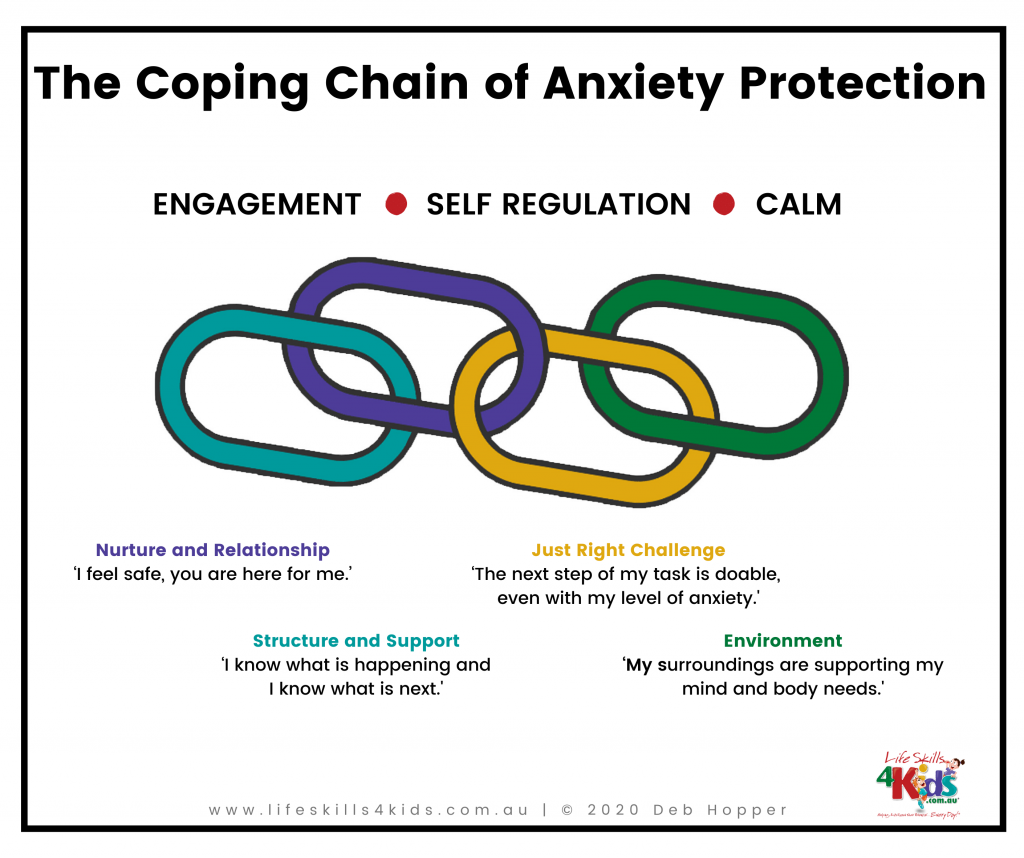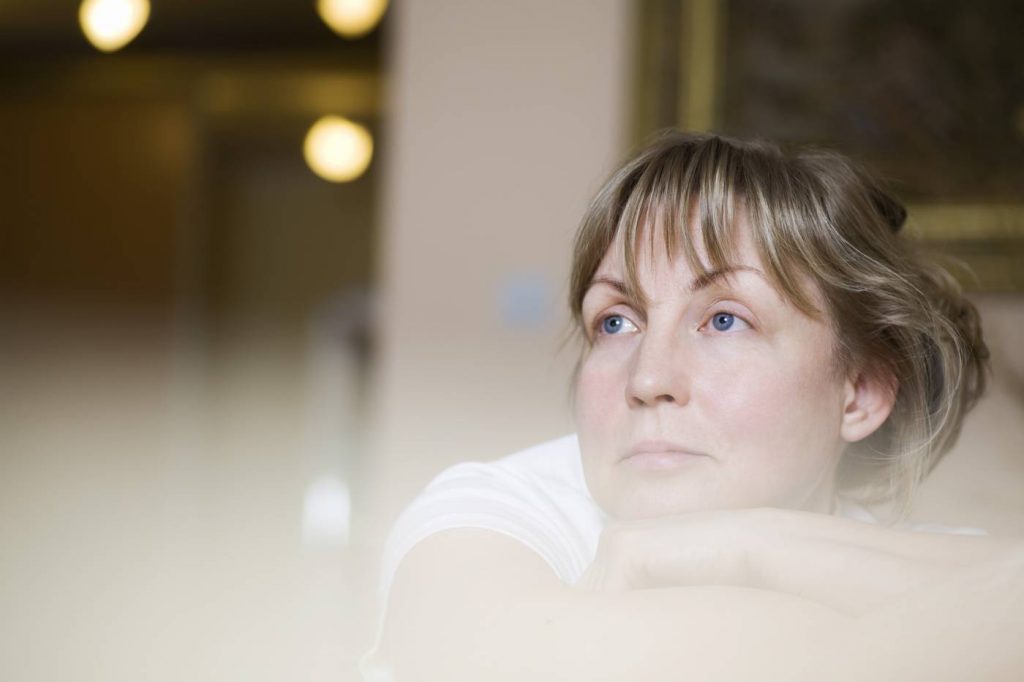By Deb Hopper
Feeling uncertain, worried and perhaps anxious in changing times is to be expected. We feel overwhelmed and anxious when we feel not in control of our situations. This is a physiological reaction in the brain, which was created to protect us in time of danger, to save us from the unexpected.
FACTORS THAT PROMOTE COPING AND PROTECT AGAINST ANXIETY
The following four factors in The Coping Chain for Anxiety Protection are paramount in looking after ourselves as adults, which in turn allows us to support our children and the children we work with. We need to be mindful of our own levels of stress and anxiety, be proactive to ground ourselves through looking after our body, our sensory needs and our own thoughts and mental health. Only then can we give support to others in the best way, whilst been sustainable for the longer term.
THE COPING CHAIN FORANXIETY PROTECTION
There are four main components to The Coping Chain. These four links in the chain are all necessary for us to remain calm, self-regulate and be engaged. If one or more of the links break down, anxiety can creep in. Let’s look at these four links in the chain and how we can support both ourselves and the children we care for or work with.

1. Nurture and Relationship
Nurturing ourselves and reaching out to others to continue relationships is vital in this time. How are our relationships going at home? Reaching out for Zoom birthday parties or Mother’s Day has perhaps been one way we have maintained these relationships. It’s not the same as being face-to- face, but are we seeking enough nurture?
For children, are we reaching out to them and giving them the nurture they need? This is hard when we may be home 24/7 together and we are craving personal space. Think about your child’s love language. How do they receive love? Is it time with you? Is it acts of service, physical touch? We need to work out how we can fill our children’s love tanks. It will make a massive difference.
2. Structure and Support
When we don’t know what to do, when we don’t know what’s happening around us, our brain flips into fear and anxiety. This releases chemicals in the brain that shuts down our frontal lobe which is our calming and problem solving headquarters. Our emotions take over and we can start an anxiety or fear spiral.
We can help ourselves through creating a daily structure for chores and other routines. For schooling from home, we can create a visual or checklist of what subjects are happening at what time. For partial return to school, a whiteboard or a calendar to show what days are at school and what days are ‘school at home’. On these ‘structures’ or calendars, we include other activities such as who is cooking each night, what is the fun activity each afternoon, exercise time, play activities. Ramp up the structure and over-communicate so that your child, your team and your family can say “I know what is happening and I know what is next”.
3. Just Right Challenge
The Just Right Challenge in the midst of anxiety and uncertainty is happening when our children can say “The next step of my task is doable, even with my level of anxiety”.
When there is so much change and uncertainty, we can’t expect the normal level of problem solving ability. Our brains are overloaded, our frontal lobe is offline and we can’t problem solve as well. We can’t expect adults or children to focus for as long as usual. Spelling tests that have been easy in the past might appear to be too hard all of a sudden. The child who was able to focus in class all day may appear oppositional or defiant.
It’s important to understand that this is not just ‘negative’ behaviour. It’s a brain feeling overwhelmed, unable to problem solve and focus as long as usual.
If a task in this time of Covid-19 pandemic suddenly seems ‘too hard’, again, we need to be the support to others to make it simpler, break down the task, increase the structure and increase our nurture, towards others.
4. Environment
The final link in The Coping Chain of Anxiety Protection is the environment. We need to be aware of our physical environment and make sure that our surroundings are meeting our mind and body needs.
We need to be aware that anxiety puts our nervous system on high alert, and this can be tiring and draining.
Monitor your environment for excess noise, light and sensory input that might be getting on your nerves. Take time out. Find a quiet place and be mindful of the birds outside, look at the clouds in the distance and just BE.
We also need to feed our body and our nervous system with regular movement and exercise, which helps us to keep calm and grounded in ourselves.
Being aware of The Coping Chain of Anxiety Protection are four simple ways we can relook at practical strategies that work for supporting ourselves, our co-workers and our children.
Deb Hopper is an Occupational Therapist, Mum, and the author of Teaching Kids to Manage Anxiety: Superstar Practical Strategies. To connect with Deb for more tips you can join our newsletter here www.lifeskills4kids.com.au/connect




